
BacterioFiles
Jesse Noar
The podcast for microbe lovers
- 11 minutes 10 seconds490: Parasitoid Pox Partners
This episode: A virus partners with a parasitoid wasp to help exploit fruit fly victims!
Download Episode (7.7 MB, 11.2 minutes) Show notes: Microbe of the episode: Actinomadura livida
Takeaways Parasitoid wasps have an interesting lifestyle: they inject their eggs into the larvae of other insects, and their young hatch and grow up by consuming the host from the inside. Some of these wasps also inject a virus along with the egg, which supports the wasp offspring by suppressing the host immune system. Most of these parasitoid helper viruses are integrated into the host wasp genome and are translated and produced as needed, but in this study, an independently replicating entomopoxvirus serves as an example of a virus-wasp mutualism. The study explores how the virus can infect the wasp prey, and how it gets passed on to wasp offspring.Journal Paper: Coffman KA, Hankinson QM, Burke GR. 2022. A viral mutualist employs posthatch transmission for vertical and horizontal spread among parasitoid wasps. Proc Natl Acad Sci 119:e2120048119.
Email questions or comments to bacteriofiles at gmail dot com. Thanks for listening!
Subscribe: Apple Podcasts, Google Podcasts, Android, or RSS. Support the show at Patreon, or check out the show at Twitter or Facebook.
11 March 2024, 5:00 am - 8 minutes 43 seconds489: Soil Smell Synthesis Significance
This episode: Many organisms produce the smell of earth, geosmin, and many others can sense it–but why?
Download Episode (6.0 MB, 8.7 minutes) Show notes: Microbe of the episode: Acidianus spindle-shaped virus 1
News item Takeaways The smell of soil or earth is one of the most recognizable smells, and comes largely from a chemical called geosmin, produced by many different kinds of bacteria. Many animal species are sensitive to geosmin, some attracted by it and others repelled. But it is still not entirely understood what is the evolutionary benefit to the microbes that produce it, or the reason why different animals are sensitive to it in different ways. In this study, different geosmin-producing bacteria were paired with tiny bacteria-eating roundworms, nematodes, to see how the chemical affected their interactions. Production of geosmin affected the worms' movement, apparently inducing them to avoid colonies of the producing microbes in some cases, though the worms still sometimes fed on the bacteria. Adding geosmin to colonies of different bacteria did not affect the worms' behavior though, so other factors seem to be involved.Journal Paper: Zaroubi L, Ozugergin I, Mastronardi K, Imfeld A, Law C, Gélinas Y, Piekny A, Findlay BL. 2022. The Ubiquitous Soil Terpene Geosmin Acts as a Warning Chemical. Appl Environ Microbiol 88:e00093-22.
Email questions or comments to bacteriofiles at gmail dot com. Thanks for listening!
Subscribe: Apple Podcasts, Google Podcasts, Android, or RSS. Support the show at Patreon, or check out the show at Twitter or Facebook.
29 January 2024, 6:00 am - 10 minutes 38 seconds488: Social Slimes Synchronize Sorties
This episode: Slime mold amoebas Fonticula alba have interesting and unique foraging and reproductive behaviors!
Download Episode (7.3 MB, 10.6 minutes) Show notes: Microbe of the episode: Cajanus cajan Panzee virus
News item Takeaways How did life develop from single-celled organisms acting independently into the complex, multicellular organisms we see and are today? Although it is difficult to look back through time to study how ancient organisms may have developed along this path, it is possible to investigate modern organisms that occupy a zone in between single-celled and multicellular, to see if we can get some hints to our own development, and also learn about some interesting microbes along the way! This study into the social amoeba, or slime mold, Fonticula alba, finds that the individual amoebal cells in a population join together into collectives and break apart into individuals at different stages of their complex life cycle, depending on the status of the bacteria around them that they forage as prey. The investigators tease out the various pathways taken by these amoebas.Journal Paper:
Toret C, Picco A, Boiero-Sanders M, Michelot A, Kaksonen M. 2022. The cellular slime mold Fonticula alba forms a dynamic, multicellular collective while feeding on bacteria. Curr Biol 32:1961-1973.e4.
Email questions or comments to bacteriofiles at gmail dot com. Thanks for listening!
Subscribe: Apple Podcasts, Google Podcasts, Android, or RSS. Support the show at Patreon, or check out the show at Twitter or Facebook.
11 December 2023, 6:00 am - 11 minutes 59 seconds487: Probiotic Pulverizes Pathogen Persisters
This episode: A probiotic strain of E. coli can target and destroy pathogens that survive a treatment of antibiotics!
Download Episode (8.2 MB, 12 minutes) Show notes: Microbe of the episode: Streptomyces griseoruber
Takeaways Antibiotic resistance is becoming more and more of a problem as bacterial pathogens develop resistance to more and more drugs. For some people who develop an infection that is resistant to everything, it's as if they were living back in the days before antibiotics were discovered, when all they could do was pray for survival. New antibiotics are needed, but even more needed are new ways of approaching treatment of infections, using innovative approaches and combinations of therapeutics. In this study, a probiotic strain of Escherichia coli was used to target potentially pathogenic E. coli bacteria that can survive treatment with a particularly effective type of antibiotic, fluoroquinolones. This probiotic strain, called Nissle, delivers toxins directly to the survivors, preventing resistant pathogens from proliferating.Journal Paper: Hare PJ, Englander HE, Mok WWK. 2022. Probiotic Escherichia coli Nissle 1917 inhibits bacterial persisters that survive fluoroquinolone treatment. J Appl Microbiol 132:4020–4032.
Email questions or comments to bacteriofiles at gmail dot com. Thanks for listening!
Subscribe: Apple Podcasts, Google Podcasts, Android, or RSS. Support the show at Patreon, or check out the show at Twitter or Facebook.
20 November 2023, 6:00 am - 9 minutes 28 seconds486: Biohybrid Bacteria Build Biomass
This episode: Incorporating light-absorbing molecules into bacterial membranes can allow bacteria to use solar energy to transform nitrogen gas into fertilizer!
Download Episode (6.5 MB, 9.9 minutes) Show notes: Microbe of the episode: Wheat dwarf virus
Takeaways Turning nitrogen gas into biologically useful compounds, such as protein or ammonia for fertilizer, is an essential part of the global nitrogen cycle and therefore, for agriculture. Today much fertilizer is produced from nitrogen gas by a chemical process that requires large amounts of energy, contributing to global warming. But certain bacteria can perform the same process using special enzymes much more efficiently. In this study, a light-absorbing molecule was inserted into the cell membrane of some of these bacteria, allowing them to use light energy directly to power the nitrogen converting enzymes. These "biohybrids" were able to produce convert significantly more nitrogen gas and produce additional bacterial biomass from it, showing promise for using such an approach for more sustainable microbial fertilizer production.Journal Paper: Chen Z, Quek G, Zhu J, Chan SJW, Cox‐Vázquez SJ, Lopez‐Garcia F, Bazan GC. 2023. A Broad Light‐Harvesting Conjugated Oligoelectrolyte Enables Photocatalytic Nitrogen Fixation in a Bacterial Biohybrid. Angew Chem Int Ed 62:e202307101.
Other interesting stories:
Email questions or comments to bacteriofiles at gmail dot com. Thanks for listening!
Subscribe: Apple Podcasts, Google Podcasts, Android, or RSS. Support the show at Patreon, or check out the show at Twitter or Facebook.
30 October 2023, 5:00 am - 11 minutes 24 seconds485: Small Cell Sculpts Sticky Snot Sphere
This episode: A marine protist predator traps prey microbes in an attractive bubble of mucus, eats what it wants, and lets the rest sink, possibly sequestering significant amounts of carbon!
Download Episode (7.8 MB, 11.4 minutes) Show notes: Microbe of the episode: Bat associated cyclovirus 1
Takeaways The oceans have a lot of unique, unexplored life in them. This is true on a macro level but even more on a microscopic level, with many different kinds of microbes of various groups with fascinating life strategies. And despite being microscopic, with enough of them around, they can affect the whole planet's climate in significant ways. In this study, one protist species gets most of its nutrients from photosynthesis, but what it can't get from the sun, it takes from prey microbes by force. To catch its prey, it creates an intricate bubble of mucus called a mucosphere, and waits for other microbes to swim into it, thinking it is food, and get stuck. Then the predator chooses the prey cell it wants and abandons the rest, letting them sink to the ocean floor and locking away the carbon they contain in the process.Journal Paper: Larsson ME, Bramucci AR, Collins S, Hallegraeff G, Kahlke T, Raina J-B, Seymour JR, Doblin MA. 2022. Mucospheres produced by a mixotrophic protist impact ocean carbon cycling. Nat Commun 13:1301.
Email questions or comments to bacteriofiles at gmail dot com. Thanks for listening!
Subscribe: Apple Podcasts, Google Podcasts, Android, or RSS. Support the show at Patreon, or check out the show at Twitter or Facebook.
16 October 2023, 5:00 am - 10 minutes 55 seconds484: Bacteriophages Boost Brains
This episode: Certain phages in the gut are linked with increases in performance on some cognitive tests!
Download Episode (7.5 MB, 10.9 minutes) Show notes: Microbe of the episode: Streptomyces bikiniensis
Takeaways Our gut microbiota includes a large number of viruses, mostly bacteriophages. These fall into two groups, the lytic kind that infects and reproduces itself immediately in a host, and the lysogenic kind that can integrate its genome into the host bacterial genome and remain dormant for long periods. In this study, a higher proportion of lysogenic phages was correlated with increased performance on cognitive tests in multiple species. In humans, men showed a small increase in some tests and women in others. In mice and fruit flies, transplant or ingestion of phages was linked to increased memory performance. Journal Paper: Mayneris-Perxachs J, Castells-Nobau A, Arnoriaga-Rodríguez M, Garre-Olmo J, Puig J, Ramos R, Martínez-Hernández F, Burokas A, Coll C, Moreno-Navarrete JM, Zapata-Tona C, Pedraza S, Pérez-Brocal V, Ramió-Torrentà L, Ricart W, Moya A, Martínez-García M, Maldonado R, Fernández-Real J-M. 2022. Caudovirales bacteriophages are associated with improved executive function and memory in flies, mice, and humans. Cell Host Microbe 30:340-356.e8.Email questions or comments to bacteriofiles at gmail dot com. Thanks for listening!
Subscribe: Apple Podcasts, Google Podcasts, Android, or RSS. Support the show at Patreon, or check out the show at Twitter or Facebook.
2 October 2023, 5:00 am - 10 minutes 36 seconds483: Recycling Resources Raises Robustness
This episode: Adding tags to proteins to increase their degradation can help engineered bacteria grow and survive better under various conditions!
Download Episode (7.3 MB, 10.4 minutes) Show notes: Microbe of the episode: Lactococcus virus sk1
Takeaways Engineering bacteria with new genetic pathways allows us to use them in many new and promising applications. Some of these are industrial fermentations, growing large quantities of bacteria to use as catalysts for production of chemicals of interest, such as biofuels. But in other cases, engineered microbes can be most useful in less controlled environments, such as the soil. In these situations, the engineering can throw off their natural metabolic balance, making them less tolerant of the stresses of such environments. In this study, a solution to this issue was tested using protein tags that signal the bacterial enzymes to degrade the engineered proteins. A variety of tags allowed for a variety of rates of degradation, allowing engineers to tune in the ideal rate. Bacteria with these engineered tags grew better in nutrient limited conditions than those without. Journal Paper: Szydlo K, Ignatova Z, Gorochowski TE. 2022. Improving the Robustness of Engineered Bacteria to Nutrient Stress Using Programmed Proteolysis. ACS Synth Biol 11:1049–1059.Other interesting stories:
Email questions or comments to bacteriofiles at gmail dot com. Thanks for listening!
Subscribe: Apple Podcasts, Google Podcasts, Android, or RSS. Support the show at Patreon, or check out the show at Twitter or Facebook.
18 September 2023, 5:00 am - 14 minutes 2 seconds482: Colony Concentric Clock Construction
This episode: Single-celled bacteria can act independently to create patterns and structure in their biofilm communities!
Download Episode (9.6 MB, 14.0 minutes) Show notes: Microbe of the episode: Dictyostelium discoideum Skipper virus
Takeaways Large multicellular organisms like us have interesting mechanisms for using one set of genetic instructions present in all cells to form a large, complex community of many different types of cells with different structures and functions, all working together. Single-celled microbes do not have the same requirements for genetic or structural complexity, but they do often display interesting communal patterns and behaviors. In this study, bacteria growing in colonies on agar displayed a particular mechanism of pattern formation previously seen only in eukaryotes, called segmentation clock or clock and wavefront process. In this process, the cells in the colony are all acting individually without communication with each other, but nevertheless form a repeating ring structure in the colony as it grows, possibly allowing some measure of differentiation of cells that could help the community survive various challenges. Journal Paper: Chou K-T, Lee DD, Chiou J, Galera-Laporta L, Ly S, Garcia-Ojalvo J, Süel GM. 2022. A segmentation clock patterns cellular differentiation in a bacterial biofilm. Cell 185:145-157.e13.Email questions or comments to bacteriofiles at gmail dot com. Thanks for listening!
Subscribe: Apple Podcasts, Google Podcasts, Android, or RSS. Support the show at Patreon, or check out the show at Twitter or Facebook.
4 September 2023, 5:00 am - 10 minutes 55 seconds481: Hijacker-Host Sequence Swap
This episode: Gene transfers between viruses and eukaryotes have happened many times throughout evolutionary history!
Download Episode (7.5 MB, 10.9 minutes) Show notes: Microbe of the episode: Mycoplasma subdolum
Takeaways As we’ve all seen recently, viruses can cause a lot of trouble. Their biology requires them to be parasites inside the cells of their hosts, and they can cause devastating disease, so it’s hard to think of them as having played important roles in the development of life on Earth, including our own evolution. However, this study found thousands of apparent historical transfers of genes from virus to host or from host to virus in the cells of all kinds of different eukaryotes. Some of these genes play important roles in the cell, helping to make them what they are. Journal Paper: Irwin NAT, Pittis AA, Richards TA, Keeling PJ. 2022. Systematic evaluation of horizontal gene transfer between eukaryotes and viruses. Nat Microbiol 7:327–336.Other interesting stories:
- Building a device that translates signals from one microbe to communicate with another
- Cloaking antitumor bacteria to fight cancer without immune system interference
Email questions or comments to bacteriofiles at gmail dot com. Thanks for listening!
Subscribe: Apple Podcasts, Google Podcasts, Android, or RSS. Support the show at Patreon, or check out the show at Twitter or Facebook.
21 August 2023, 5:00 am - 8 minutes 37 seconds480: Bait Bottlenecks Bear Bacteria
This episode: Human-based food used as bait by hunters can reduce bears' gut microbe diversity!
Download Episode (5.9 MB, 8.6 minutes) Show notes: Microbe of the episode: Actinomadura verrucosospora
Takeaways Gut microbes are important for the health of most animals. In humans, many things can affect our gut microbe community, including diet, medications, and lifestyle. Eating a varied diet with diverse kinds of plant-based foods can maintain a healthy, functional community of many different kinds of microbe. However, eating mostly highly processed grain-based foods can reduce the diversity and functionality of the gut community. This is also true in bears. In this study, when bears consumed more processed, grain-based human foods via hunters leaving such foods out as bait, the gut communities in these bears had reduced diversity of microbes. The effects of this reduced diversity were not determined, but it is reasonable to assume it was not good for the bears’ overall health. Journal Paper: Gillman SJ, McKenney EA, Lafferty DJR. 2022. Human-provisioned foods reduce gut microbiome diversity in American black bears (Ursus americanus). J Mammal 103:339–346.Other interesting stories:
- 3D-printed electrode structures harvest electricity from bacterial photosynthesis
- Gut microbes are important for helping tadpoles survive in warmer conditions
Email questions or comments to bacteriofiles at gmail dot com. Thanks for listening!
Subscribe: Apple Podcasts, Google Podcasts, Android, or RSS. Support the show at Patreon, or check out the show at Twitter or Facebook.
3 July 2023, 5:00 am - More Episodes? Get the App
Your feedback is valuable to us. Should you encounter any bugs, glitches, lack of functionality or other problems, please email us on [email protected] or join Moon.FM Telegram Group where you can talk directly to the dev team who are happy to answer any queries.
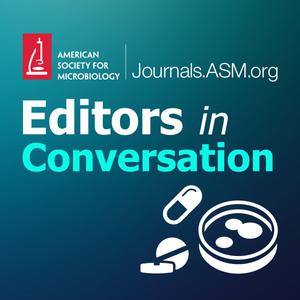 Editors in Conversation
Editors in Conversation
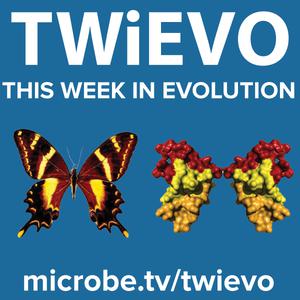 This Week in Evolution
This Week in Evolution
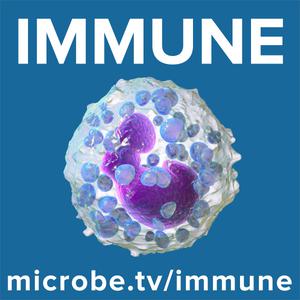 Immune
Immune
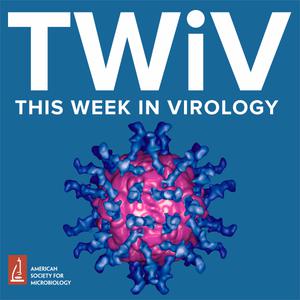 This Week in Virology
This Week in Virology
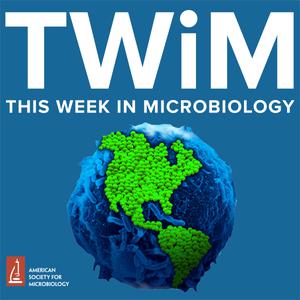 This Week in Microbiology
This Week in Microbiology
 Microbe Talk
Microbe Talk